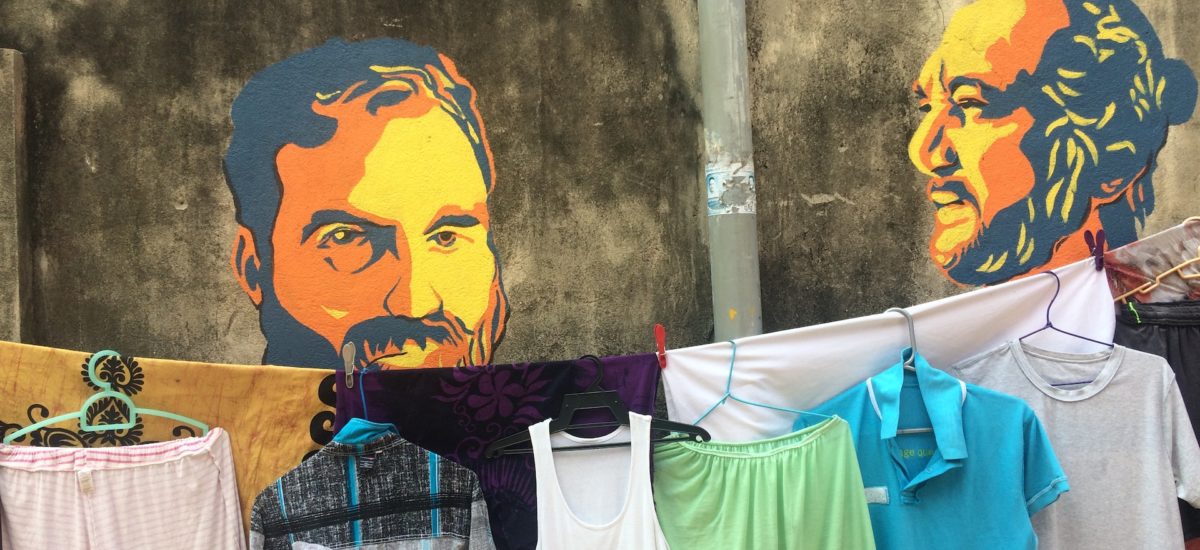Photos courtesy of Firi Rahman
Today is the World Day for Cultural Diversity for Dialogue and Development
Sri Lanka is a pluralistic society where communities of different cultures and religions exist side by side. However, a 26 year civil war as well as attempts by political leaders to create divisions between communities for political gain has caused disharmony and polarisation that need to be addressed if there is any chance of sustainable peace.
“Three-quarters of the world’s major conflicts have a cultural dimension. Bridging the gap between cultures is urgent and necessary for peace, stability and development…Cultural diversity is a driving force of development, not only with respect to economic growth, but also as a means of leading a more fulfilling intellectual, emotional, moral and spiritual life. Cultural diversity is thus an asset that is indispensable for poverty reduction and the achievement of sustainable development.
“At the same time, acceptance and recognition of cultural diversity…are conducive to dialogue among civilizations and cultures, respect and mutual understanding,” according to the UN.
In December 2002, the UN General Assembly declared May 21 to be the World Day for Cultural Diversity for Dialogue and Development
One medium for understanding each other’s cultures and traditions is art. Firi Rahman is an artist who has been documenting the vibrant cultures of Slave Island, where he lives, for the past several years and recently launched a new project called “We Are From Here” along with colleagues Vicky Shahjahan and Parilojithan Ramanathan.
The project includes telling the stories of people in the community through art and archiving, in particular by painting murals of well-known and colourful local figures on walls. It aims to change the image of Slave Island as a crime-ridden, impoverished place for deadbeats and drug addicts.
The character and culture of the area is under threat from the Slave Island Redevelopment Project and the Urban Regeneration Project, part of efforts to transform Colombo into a “world-class” city that pays little heed the impact of gentrification on the lives and livelihoods of the inhabitants of Slave Island. With walls literally being torn down around them, the founders of the project are also digitalising it to preserve the history and culture of the area and its residents.
To foster understanding among communities, Firi and his colleagues conduct art walks through the neighbourhood for interested groups.
Firi explained the project, his work and its impact.
Do you think art plays a part in promoting coexistence?
Growing up in Slave Island helped me understand the cultural diversity of my neighbourhood at an early age. Through my research, I understand how interfaith marriage is not only part of my family but is also very common in my neighbourhood. Two of our murals highlight this subject. Usually during our art walk, we share interesting facts about the neighbourhood and visitors get a chance to see the true coexistence of the diverse community. Each house shares their wall with another race or religion in the same stretch of houses. Our collection of oral history, which is the next phase of our project, captures English, Tamil, Sinhala and Malay. We value inclusion in every aspect of our project from walks to archives.
Do you see your art as a way of highlighting your culture for others to understand?
We definitely make sure the cultural practices of the neighbourhood are documented and shared with others to get a better sense of the area. We focus not only on heritage but look into new ways of social behaviours in our own lifetime. That includes food, sports and religious activities.
What motivates you to do the work that you do?
The motivation for this project started with the idea of changing the negative perception of my area. The process helps me to think about my own roots and the untold oral history of the area. My project defines who I am today. We wanted to keep our walks as being unique to the art scene in Colombo and to have people learn something from us. I do it because of the sense of satisfaction I get for being able to give back to the community I come from. Slave Island a special place in many different ways because of the diverse communities who live here, their food, sports and traditions. It’s about people and the living heritage.
Please click on the images








